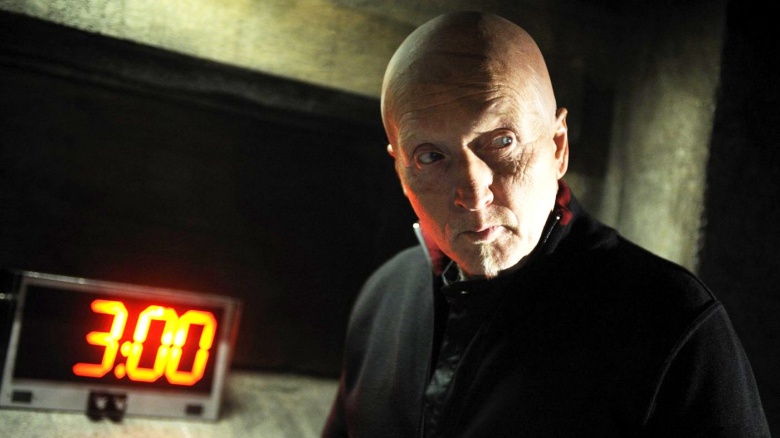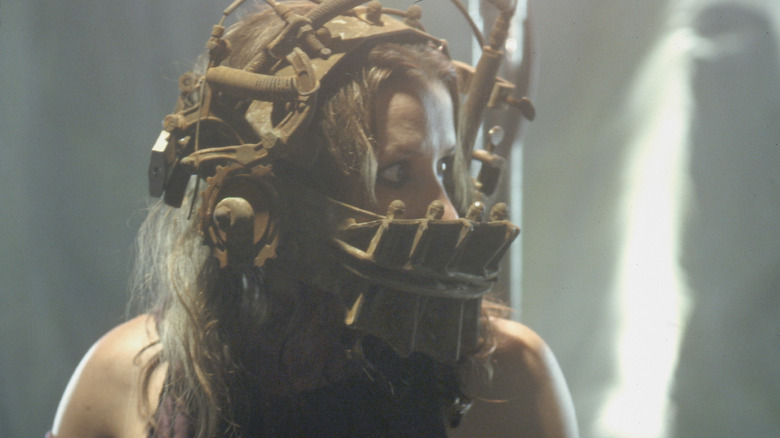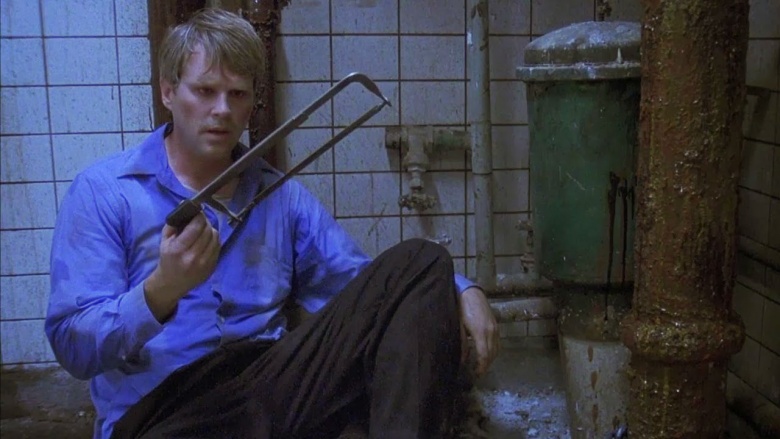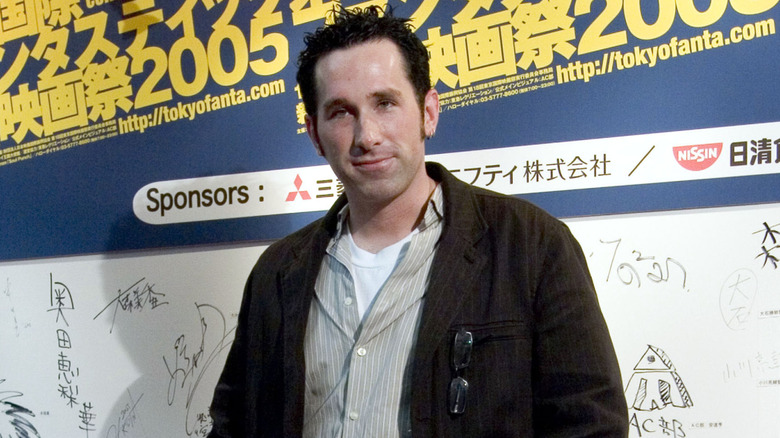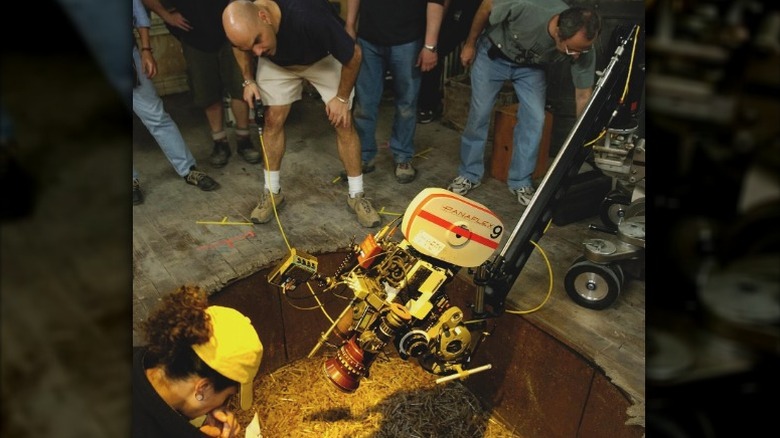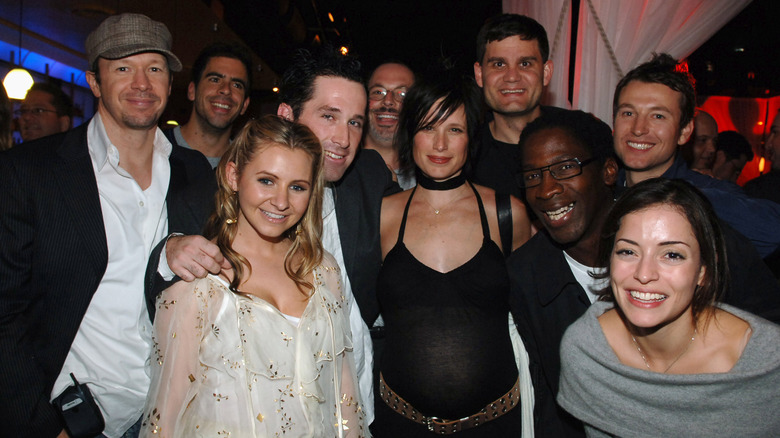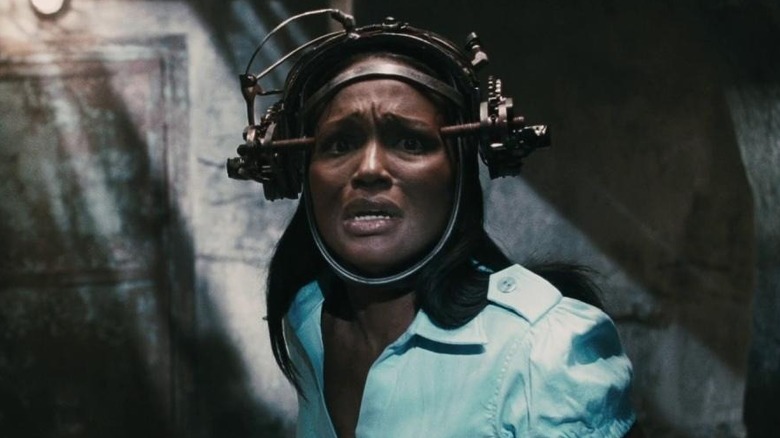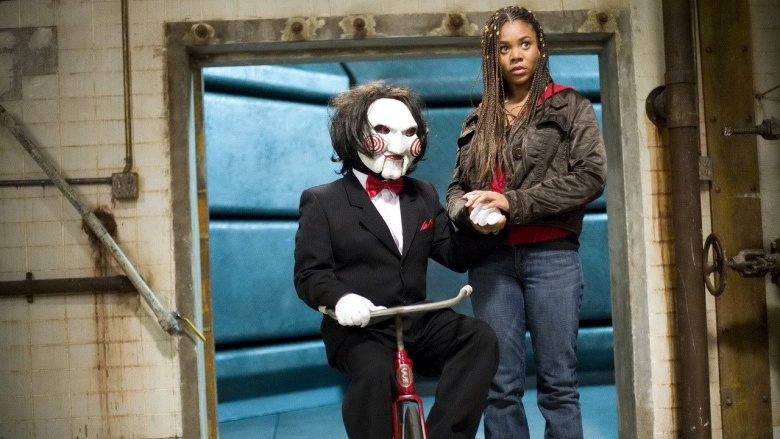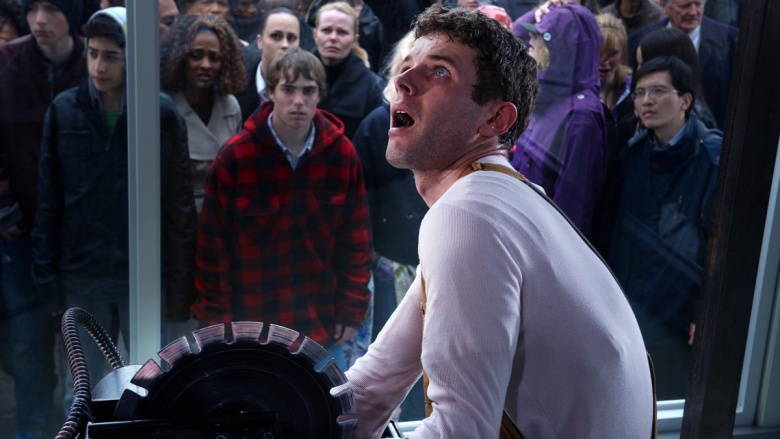The Untold Truth Of Saw
Let's play a game, shall we? The Saw franchise is one of the most prolific horror franchises of all time, with seven films released in back-to-back sequence and nearly a billion box office dollars earned worldwide (so far). Jigsaw's work is still far from "game over," as 2017's Saw: Legacy looks to resurrect the series and breathe new life into all the trap-happy death dealing. Here's a look at some behind-the-scenes stories from Saw that helped make the series such a beloved gorefest. Read on or don't—make your choice.
Cheap tricks
When writer-directors Leigh Whannell and James Wan finished film school together in Melbourne, Australia, they knew they wanted to team up to make a slasher flick. What they didn't know was where to find the funds. Their financial limitations loomed large, so when they first came up with the bare-bones structure of Saw, it was based on how very cheap it would be to make an entire movie about two guys stuck in a room together, chained up with no way out.
With about $2,000 (borrowed, of course) they were able to make a spec film featuring Whannell as the character who wakes up in a reverse bear trap and has to rifle through someone's intestines to get the key. Though brief and budgeted, the short showcased the duo's originality, from Billy the puppet strolling in to declare the game over to the survivor's guilt that would plague many a Saw character to come in the eventual series. Even when they did secure financing for the full feature, there was still some smoke and mirrors at play; the film only took 18 days to shoot, there were no actor rehearsals, and the first Billy puppet was made by Wan himself, with ping-pong balls, paper towel tubes, and papier mâché.
Head case
The idea for John "Jigsaw" Kramer, the mastermind behind most of the series' sinister games, stemmed from a surprising source: Whannell's own cranial treatment. He'd been experiencing migraines, and when he went through an MRI and testing, he imagined what it would be like to get the bad news of his own impending expiration date afterward. "I started to imagine this character who had been given a time limit, who'd been told that he had a year, two years to live, really, and that his condition would slowly kill him," Whannell told the A.V. Club.
Paranormal premonition
Before Wan and Whannell settled on the structure for Saw, they toyed with a few other film concepts for their first feature together, including a story about out of body experiences and another which sounds eerily similar to what would later become Paranormal Activity. As Wan described it, the concept "was an idea about a guy who goes to sleep at night and wakes up in the morning with scratches on himself. He notices something weird is happening to him at night, so he sets up video cameras while he sleeps." They also considered an elevator-centric narrative that resembled the story M. Night Shyamalan later devised for Devil.
Casting crush
Shawnee Smith was originally courted for the role of Amanda—a part which accelerated in importance and screentime throughout the series—because Wan had harbored a crush on her since childhood, and was surprised to find that his offhand suggestion of an old favorite turned out to be a viable option for casting. For her part, Smith later said she was "flattered on top of flattered" by Wan's admiration of her work.
Slightly slighted
After Saw proved to be a surprise runaway hit at the box office (grossing $103 million worldwide against a reported $1.2 million budget), actor Cary Elwes was majorly displeased with the comparatively small slice of the pie he received from the proceeds. In a suit filed against the production companies and producers, Elwes alleged that he was only paid $53,275 in backend revenues on top of his original $2,587.20 salary, even though he was promised at least 1% of the producer profits. He sought half a million in damages, and the parties eventually settled out of court.
The acrimony must not have lasted long, because Elwes was asked to return to the franchise a few films later. Although he eventually starred in Saw 3D, he'd been invited to reprise his role as Dr. Gordon in Saw V, but opted to wait 'til the big finish to come back. "What I really wanted was to come back for the very last movie in the series," he explained to the Daily Dead. "I don't think there's anything left to tell with Dr. Gordon, and I was very happy how they left the character by the conclusion." Of course, Saw 3D turned out not to be the last installment, and Gordon's fate was left undetermined, so there's still a chance he could return for Saw: Legacy—which has, as of this writing, not confirmed its cast.
Desperate for Saw II
Given the quick turnaround time between the first Saw and the sequel—Saw II was slated to hit theaters just one day shy of a year after the first—producers looked outside the original bathroom box for help with its development. Up-and-coming auteur Darren Lynn Bousman had already written a screenplay for his own film The Desperate, but it was criticized for being too similar to Saw, so producers saw an opportunity to tinker with Bousman's flick and transform it into a follow-up for their own, with a little help from Whannell. "To put in perspective, just weeks prior, I was penniless," Bousman later wrote of the whirlwind opportunity to become part of the series. His foray into the Saw series was so successful that he remained on board as director of the third and fourth films.
Deep point of difficulty
Although nearly all of the traps in the Saw series were complicated, none could be more labor-intensive than the needle pit from Saw II. As Bousman remembered, he and the filmmakers "grossly underestimated the amount of needles that would be needed to fill the pit," and it ended up taking over 120,000 in all to fill that prickly vat, which required the round-the-clock efforts of a team that worked for four days to replace the needles with fiber optic tips. After all that prep making the site safe for Smith to dive in during her scene, a crew member accidentally knocked a pile of real needles into the heap, so they had to halt production before it could even begin to locate them. "It was like finding a needle in a needle stack," Bousman later joked.
Good blood
As a nod to all the onscreen bloodshed in the first two Saw films, Saw III's theatrical promotion included a poster made using a real vial of actor Tobin Bell's blood, mixed with red ink to create the most visually jarring shade for his cloak in the image. Lionsgate printed 1,000 copies of the design and auctioned it off to benefit the Red Cross, in addition to hosting a series of blood drives organized by the studio that raised thousands of pints for the organization.
Toilet humor
There's very little levity to be seen onscreen in the Saw series, but behind the scenes, the cast and crew found ways to keep the mood light. One running gag during production was the use of a hidden fart machine that was set off during particularly difficult scenes, but they've also been known to break out whoopie cushions, and during Bell's nude morgue scene, his splayed out exposure got him "cupped" in the nether region by co-stars. Talk about your crude humor.
Scream Queens
Two actresses who appeared in the franchise won their roles by way of a reality show. The competition series Scream Queens gave its two season winners-slash-ingenues small parts in the last two films. Tanedra Howard, who won the first round and appeared in both Saw VI and Saw 3D, has since gone on to star in several shows and films. Meanwhile, Gabby West, who won a spot in the seventh installment, has been steady on the short film scene but hasn't enjoyed quite the same career trajectory.
Friendly favors
For Saw III, instead of rebuilding the bathroom set from the earlier films, the filmmakers borrowed the replica stage which had already been built for the spoof film Scary Movie 4. They also turned to Rob Zombie for help editing the film down to an R rating and avoid the NC-17 originally assigned by the MPAA.
Oopsie daisy
One Massachusetts theater full of children were out for an innocent screening of the animated flick Megamind in 2010, but the film that actually started to roll was an entirely different experience: Saw 3D. Some of the children experienced nightmares after the first few minutes (which opens with two men who have to hacksaw their shared girlfriend to save themselves) before the theater operators realized the error and switched the tape over, so the damage was done.

